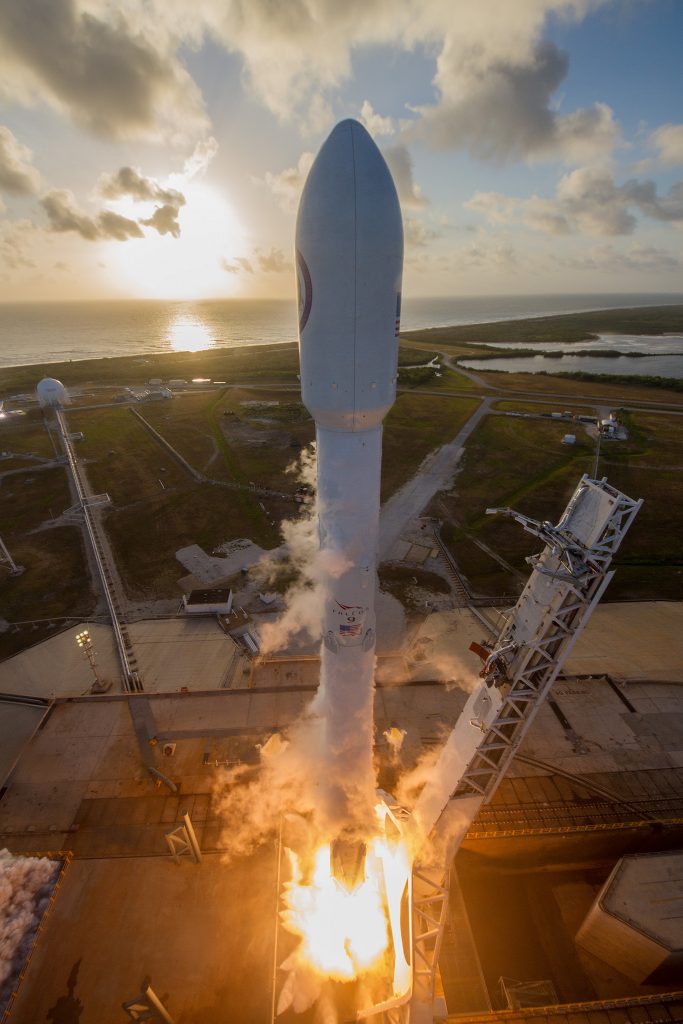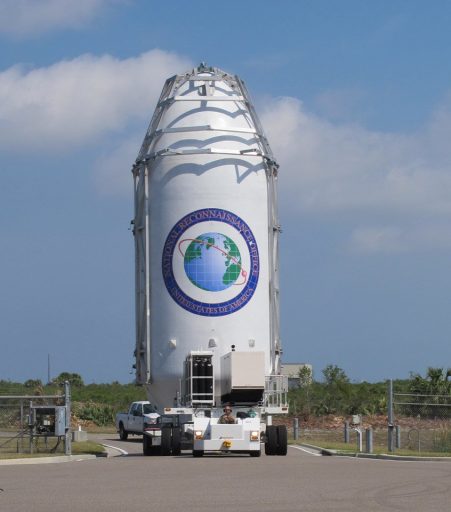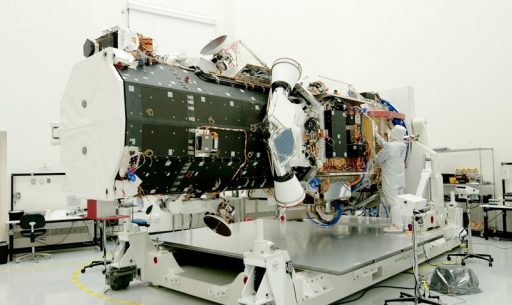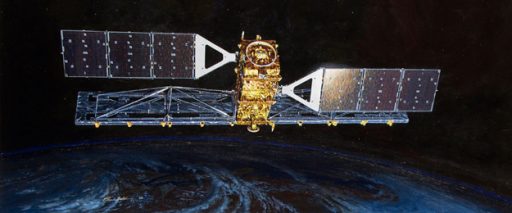Satellite Trackers spot Classified NROL-76 (USA-276) Satellite in Low Earth Orbit

Three weeks have passed since the secretive NROL-76 satellite launched atop a Falcon 9 rocket. Now satellite trackers have gotten hold of the clandestine spacecraft operated by the U.S. National Reconnaissance Office in a Low Earth Orbit 400 Kilometers in altitude.
NROL-76 lifted off from the Kennedy Space Center atop a SpaceX Falcon 9 rocket back on May 1st, becoming the first mission of the California-based launch services provider with a secret NRO satellite as main payload. Standard for NRO missions, no information on the payload’s identity nor its target orbit were released for this mission.
However, safety zones identified for this launch showed Falcon 9 was most likely headed into a Low Earth Orbit and the propulsive return of the rocket’s first stage to Cape Canaveral placed an upper bar on the satellite’s mass.
The consensus among satellite watchers prior to launch was that NROL-76 is most likely a medium-weight technology demonstration satellite targeting a Low Earth Orbit, possibly to test out sensor technology for a future NRO project. In a departure from the complete secrecy surrounding its missions, the NRO said that the NROL-76 launch contract was procured by Ball Aerospace, strongly suggesting the company also manufactured the satellite which adds merit to the theory of NROL-76 carrying experimental optical or radar sensor equipment based on Ball’s previous experience.

With high certainty that NROL-76 was headed into Low Earth Orbit, satellite trackers drew up possible orbital parameters that matched the north-easterly departure path identified by navigational warnings issued prior to launch as well as the impact location of the rocket’s second stage that conducted a multi-hour coast & re-start test after dispatching the NROL-76 payload.
Various orbital scenarios fit with these constraints, indicating NROL-76 would most likely end up somewhere between 300 and 400 Kilometers in altitude and an orbital inclination around 50 degrees – assuming no excessive out-of-plane maneuvers during launch.
Falcon 9 lifted off with its clandestine satellite payload at 11:15 UTC on May 1st and NROL-76 received a smooth ride up to the point of payload fairing separation shortly into the second stage burn when the mission headed into the typical news blackout of NRO launches. As evident from the flight timeline and live broadcast, Falcon 9 flew a lofted trajectory resembling that of Dragon missions headed to the International Space Station – indicating a single-burn ascent into a near-circular Low Earth Orbit.
The Joint Space Operations Center cataloged NROL-76 as USA-276 in the numbering system of U.S. military satellites, confirming the craft had arrived in orbit. Spotting the satellite in its classified orbit proved out to be difficult, not only due to uncertainty in orbital parameters but also a lack of visibility for much of the global satellite tracking community in the weeks after liftoff.

Initial attempts to identify NROL-76 through its radio downlink came up empty handed when no candidates showed up in the typical S-Band frequencies used for telemetry downlink. It became clear that several weeks would pass before the satellite would become visible for observers in Europe at which point it could have drifted far off any reasonably close pre-launch predictions.
Observer Leo Barhorst reported to the SeeSat Mailing List on Wednesday that he managed to catch NROL-76, showing up around nine minutes ahead of the pre-launch estimate. His measurements were used to update tracking elements for the hush-hush satellite, circling the planet in an orbit of approximately 398 by 401 Kilometers at an inclination of 49.96 degrees.
Taking these parameters as a basis, trackers from Canada reported more observations, broadening the observation arc in order to lock down precise orbit parameters for NROL-76.
Satellite watchers will continue monitoring NROL-76 and potential activity such as orbital maneuvers or changes in brightness that could point to reconfigurations of the satellite such as the deployment of any large appendages.
USA-276’s orbit is consistent with pre-launch speculation of a one-off NRO mission, most likely dedicated to testing out a new type of intelligence-gathering sensor package to retire risk for a future NRO program.

A previous NRO Low Earth Orbit tech demonstration mission, USA-193, set out to demonstrate a new radar payload to retire risk for the agency’s Topaz radar constellation prior to its first launch. However, within hours of the craft’s December 2006 launch, the satellite failed and could not be recovered, leaving the 2,300-Kilogram vehicle in an uncontrollable state and headed for re-entry within two years of launch. In February 2008, USA-193 was purposefully destroyed by an SM-3 missile when it had decayed to a point where most debris created by the strike would re-enter within a period of days.
Although the architecture under which USA-193 was developed has largely been dismantled with the cancellation of the Future Imagery Architecture, a follow-on mission of similar nature but with different sensor equipment seems within reason given the NRO has shown desire in the past to test out systems for critical future missions beforehand – as illustrated by USA-193 and, more recently, USA-225 that launched in 2011 as a low-cost, small spacecraft mission to test out new technologies.

Ball Aerospace’s product palette only has two candidates that would fit this mission – the BCP-5000 and BCP-4000 satellite platforms which are the company’s largest satellite buses and the only that would justify the use of the powerful Falcon 9 launcher.
BCP-5000 is optimized for large optical payloads and has flown three times to date for DigitalGlobe’s WorldView program. These satellites weigh in at up to three metric tons and offer accommodations for high-resolution optical payloads in a variety of wavelength ranges. Of particular interest for optical collection is BCP’s high agility through the use of Control Moment Gyros that allow the satellite to move from one target to the next within five seconds. WorldView-3, the most recent BCP-5000, achieves a ground resolution of 31 centimeters whereas the NRO’s powerful Keyhole satellites are rumored to have a resolution around 10-15 centimeters.

BCP-4000 is optimized for Synthetic Aperture Radar Payloads, having flown only once before on the RadarSat-1 mission of the Canadian Space Agency that carried a Canadian-built radar system primarily used for remote sensing.
The NROL-76 patch features a pair of explorers – Lewis & Clark – one peering into the distance with a telescope while the other intently looks toward the same direction with a rifle at the ready. The words ‘Explore – Discover – Know’ are inscribed on the patch which could indicate NROL-76 will be used as a technology demonstration, exploring a future sensor for intelligence-gathering craft, potentially making use of new technology or a novel wavelength band not previously used in reconnaissance.
The scope and rifle on the patch could also imply the satellite will take on a tactical role within the NRO’s spying fleet.

